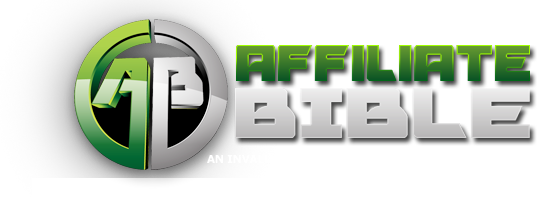If there’s one cold, hard fact in the gambling affiliate world, especially in light of the UIEGA, it is that it is imperative that we as poker affiliates start promoting to markets outside the US, specifically non-English speaking markets. Yet the question that props up again and again is “What languages do we translate to?”. The answer to that may be a lot easier than you think.
It’s no secret that in this day and age, we need to start targeting the non-English speaking markets. The main issue affiliates face however is knowing what markets to target. With many Scandinavians playing poker these days, it may seem like getting your site translated to Denmark, Norwegian or Swedish would be the best idea. Yet from speaking to one professional gambling translation service, their most popular requests in the last 12 months were Brazilian Portugese, German, Spanish and French. It also depends strongly on what type of content you provide, as some markets are more interested in certain type of content than others.
One thing affiliates can do is roll the dice and hope they luck out by translating into one of the more popular languages and hoping it appeals to that market. Unfortunately, you really don’t have any idea if this will work out, and could be throwing money away in a language that won’t convert. Thankfully, there is a money-saving “shortcut” where you don’t have to spend a dime and can determine what languages your site should be translated to.
 For those who aren’t aware – there are automated translation websites out there. You either paste in text or the URL of a webpage, and it automatically converts the text for you to the language of your choice. The most popular translation service for awhile was Babelfish, although Google Translate has recently replaced it and covers more languages.
For those who aren’t aware – there are automated translation websites out there. You either paste in text or the URL of a webpage, and it automatically converts the text for you to the language of your choice. The most popular translation service for awhile was Babelfish, although Google Translate has recently replaced it and covers more languages.
Now make no mistake about it – these translation services are nothing like the real thing. Not even close, and I have to advise this before we go any further – don’t even think about using these type of services as a permanent resolution to your translation issues. You know the old saying “you get what you pay for?” That definitely applies here, as the translations in lots of cases are of very poor quality and often aren’t even semi-accurate.
What you can do however, is use these services to translate your site and all its content into certain languages, use a program like Google Analytics, then sit back and analyze the traffic, and determine where visitors are coming from. While the translations aren’t always readable, you’re most likely going to hit the correct “buzz words”, aka the phrases that people are going to be searching for. Via different tests I’ve done, I can confirm that you will get the same amount of clicks from search engines with the automated translation service, as you would from a legitimately translated page.
So all you have to do is use Google Translate to translate all your content, let it sit for a couple of months, then analyze the statistics and see where your site is most popular, and determine what foreign languages to get professionally translated.
Since implementing this method on many of my sites, I’ve instantly noticed a large spike of traffic from non-US markets on all my sites. Using my friends Phil Ivey site for example, he implemented the different translations on all his pages on November 15th, 2008. On November 17th, he noticed a 205% increase on new visits over the previous day. On the 18th there was an 85% increase, and it has constantly remained about 80% ever since, meaning he is reaching many more new visitors per day.
On the 15th, he would receive visitors from approximately 4 countries on a daily basis. On the 18th? 21 countries. On the 21st? 26 countries. People are visiting from Estonia, Germany, Portugal, Finland, Czech Republic, Sweden and many more countries where English isn’t their primary language. He has all his pages translated into all these different languages, and is killing in the search engines because of it.
Now of course there are concerns in regard to all of this. You could turn off foreign visitors with your poor translations, and when the site is professionally translated they may not come back. However that is a small concern, and for the majority of websites that you run, I don’t think that will be an issue.
If you are concerned about it though, you can either launch a separate site and domain to do these tests so that it isn’t affiliate with your current site, or you can get a professionally translated message at the top of every page just stating that you are currently testing out translation services, you know they aren’t perfect, and if the reader wants to know when the pages are professionally translated to enter their e-mail address in a form below. I really don’t think turning off visitors will be much of an issue however and I wouldn’t really concern myself with that.
Also one thing that really has surprised me, is that based on the stats I’ve looked at, these automated translations AREN’T turning people off. Quite the opposite in fact. Looking at the Phil Ivey sites Google Analytics for example, I can see that bounce rates for non-US markets for the past 5 days are around the 25% mark, which is a very low bounce rate, all things considered.
He’s also noticed an increase in signups at the poker rooms he promotes, and is going to implement geo-marketing banners to hopefully increase conversions even more.
So if you’re looking into getting your site translated, I highly recommend implementing this method first. It is a cost-free way to determining what languages your site should be translated in, and give you a general idea of what type of content appeals to what type of visitor. I do have to stress though – don’t even think about using this type of translation service permanently. If you see that you get a lot of visitors for one particular language, I recommend contacting a professional translation service immediately.
Also I spoke with some professional translation services in length about this subject, and they raised some concerns about this method possibly taking away their business. If you’re a professional translation service please don’t be concerned about that – if anything, this will increase your business.
The affiliates that will use this method normally wouldn’t be willing to risk translation considering the cost, however when they see that they get a lot of visitors from Romania(for example), then they’ll look into seeking your services immediately, and you’ll reach a whole new audience you normally wouldn’t get.
Overall, this is win-win, and no matter how you translate that it’s always the ideal result!

 Dealer Dan, pictured here with WWE Superstar Mick Foley, has been in internet marketing since 1996. He likes hugs, long walks on the beach, and making money while wearing his jammy jams. For more information, you can read all
Dealer Dan, pictured here with WWE Superstar Mick Foley, has been in internet marketing since 1996. He likes hugs, long walks on the beach, and making money while wearing his jammy jams. For more information, you can read all 













